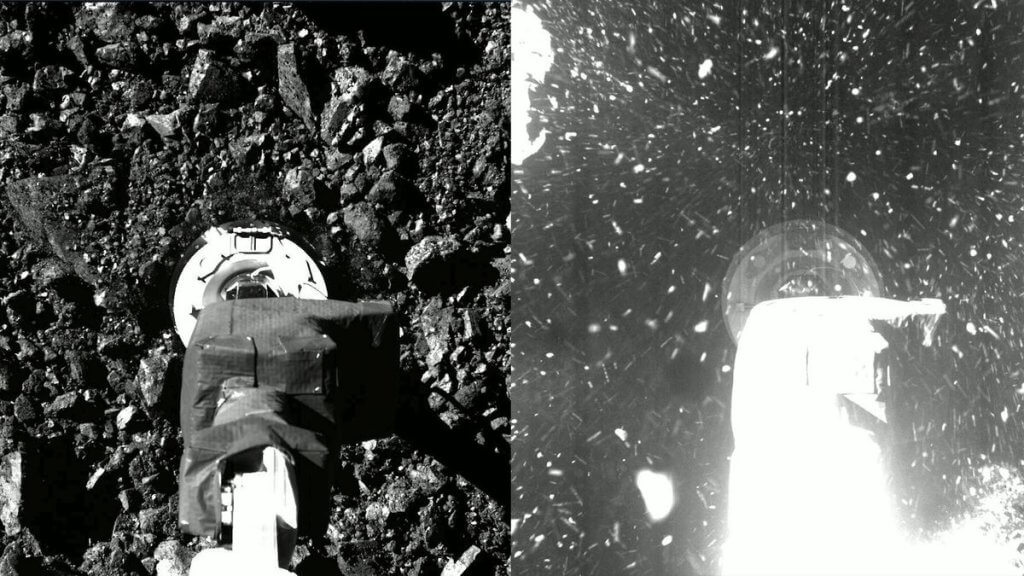
How much of asteroid Bennu is NASA’s OSIRIS-REx probe delivering to Earth this weekend? (Image Credit: Space.com)
We’ll soon find out just how much asteroid dirt and rock NASA’s OSIRIS-REx spacecraft collected nearly three years ago.
OSIRIS-REx‘s sample capsule is scheduled to come down to Earth on Sunday (Sept. 24), making a soft landing under parachutes in the Utah desert.
That capsule is full of precious cargo — material OSIRIS-REx snagged from the surface of a 1,650-foot-wide (500 meters) near-Earth asteroid named Bennu in October 2020. Analyses of this space-rock stuff could reveal a great deal about the solar system’s early days, researchers say, and might even shed light on how life got its start here on Earth.
Related: Dramatic sampling shows asteroid Bennu is nothing like scientists expected
OSIRIS-REx was tasked with grabbing at least 2 ounces (60 grams) of material during its dive down to the asteroid’s surface. That dive, by the way, turned out to be surprisingly sporty: Bennu was not nearly as solid as the mission team had expected, and OSIRIS-REx’s sampling arm sank deep into the space rock before popping back out again.
The spacecraft emerged with a bounty of Bennu bits — so much, in fact, that dirt and rock clogged up the sampling gear, preventing a proper seal and causing some collected material to float away into space.
To minimize sample loss, the mission team decided to stow the Bennu material in the probe’s return capsule as quickly as possible. This new plan skipped a previously planned maneuver that was supposed to spin OSIRIS-REx around a bit, in order to gather data that would allow team members to estimate the mass of the collected sample.
The mission team arrived at an estimate by other means, but it’s far from precise. The number is 8.8 oz (250 g), plus or minus 3.6 oz (101 g). So, the sample capsule could contain as much as 12.4 oz (351 g), or as little as 5.2 oz (149 g).
The true number won’t be known until the asteroid sample has been processed, so we’ll just have to wait and see.
Even the low-end estimate would still be a ringing success for OSIRIS-REx, though, as it’s far above the 2-oz minimum laid out in the original mission plan.
For some perspective: Japan’s Hayabusa2 spacecraft returned only about 0.18 oz (5 g) of material from the asteroid Ryugu in December 2020, and scientists have already squeezed a lot of intriguing results from that relatively small sample.
OSIRIS-REx’s returned material will be stored and curated at NASA’s Johnson Space Center (JSC) in Houston. The JSC team will oversee the distribution of the sample to researchers around the world, who will study it for a variety of purposes.
One line of inquiry will focus on organic compounds, the carbon-containing building blocks of life as we know it. Scientists think carbon-rich asteroids like Bennu may have helped life get a foothold on Earth long ago, by delivering organics via impacts.
But the OSIRIS-REx spacecraft’s work won’t be done after it sends the sample capsule toward Earth. The probe will then set a course for the potentially hazardous asteroid Apophis, which it will reach in 2029 and study on an extended mission known as OSIRIS-APEX.





